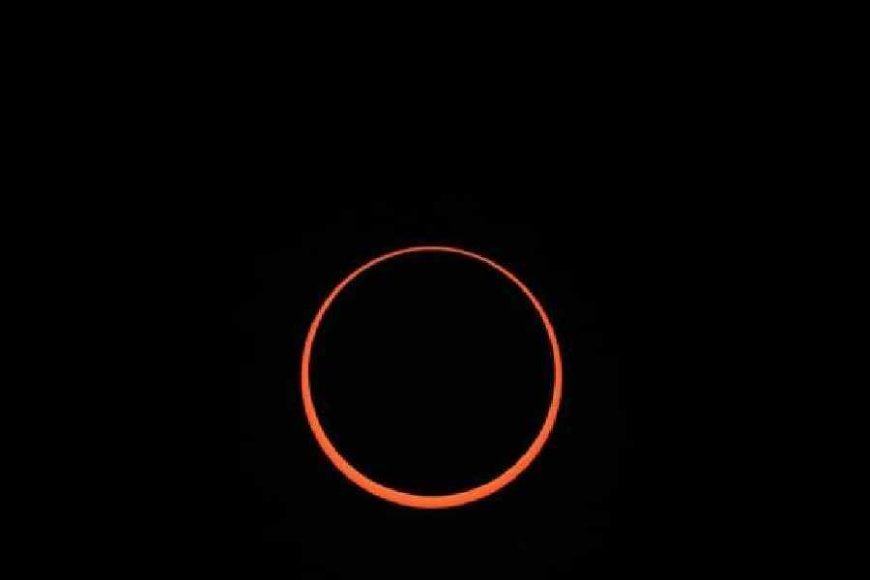A Spectacular Celestial Show: North America Enthralled by Total Solar Eclipse
Millions across Mexico, the US, and Canada Witness the Moon's Shadow as It Races across the Continent, Marking a Historic Astronomical Event

Monday saw a total solar eclipse sweep across North America, delighting those fortunate enough to witness the show under clear skies. The eclipse was accompanied by a cold, noon darkness.
As the moon moved in front of the sun, blocking out daylight, eclipse craze surged across Mexico, the US, and Canada. If the weather allowed, almost everyone in North America was assured to see at least a partial eclipse.
With several hundred million people living in or close to the shadow's path, together with a large number of visitors from outside the area, it was the largest eclipse viewing party on the continent ever.
As the complete solar eclipse started its diagonal race across land, beginning along the fairly clear Pacific coast of Mexico and heading toward Texas and 14 other US States until departing into the North Atlantic around Newfoundland, clouds covered much of Texas.
In the last moments before totality, the hundreds of people gathered at Mesquite's downtown area whistled and rejoiced as the clouds parted, just east of Dallas. The throng became more boisterous as the sun eventually covered itself, removing their eclipse glasses to revel in the remarkable sight of Venus gleaming brightly to the right and the sun's corona, or spiky outer atmosphere.
The previous total solar eclipse to occur in this area was in the 1870s, as city officials reminded everyone, making this one much more noteworthy. The music with eclipse themes was switched off as the big moment drew near.
Aiyana Brown, 14, exclaimed, "Oh God, it's so dark," as she and her grandfather, Mesquite Mayor Daniel Aleman Jr., watched. As a major scientific geek, I think this is fantastic.
Near Austin, the weather also became cooperative at the last minute. Ahmed Husseim of Austin wrote down the eclipse on his calendar for a year and declared, "I will never unsee this." Hundreds of people congregated with blankets, lawn chairs, and country music on the grounds of Southwestern University in Georgetown, Texas, including Husseim and his family.
Prior to Monday's extravaganza, the US's best bets were in northeastern New England and Arkansas. In Canada, Newfoundland and New Brunswick also appeared potential.
Before 12:00 EDT, the program began in the Pacific. The only thing shining on viewers' faces as the entirety of darkness descended upon the Mexican tourist city of Mazatlán were the screens of their cellphones.
The suspense and cliffhanger made for more dramatic scenes. Erin Froneberger, who was in Mesquite, near Dallas, for work, was unfazed by the cloudy sky as she had brought her eclipse glasses.
She remarked, "We are always just rushing, rushing, rushing." "However, we can just accept the fact that this is an event that will happen for a moment, a few seconds."
Monday's festival outside of Austin ended early due to the possibility of afternoon thunderstorms. The organizers of the festival asked everyone to prepare to depart.
After spending the morning on the slopes, Sara Laneau, of Westfield, Vermont, woke up at four in the morning on Monday to take her 16-year-old niece to the nearby Jay Peak ski resort to see the eclipse.
Saying, "This will be a first for me and an experience of a lifetime," Laneau revealed his solar eclipse T-shirt beneath his purple metallic ski suit.
Under overcast skies, visitors poured into Niagara Falls State Park pulling wagons, strollers, coolers, and picnic chairs. Park officials anticipated a sizable throng at the well-liked location with a view of the falls.
The moon completely obscured the sun during Monday's full eclipse since it passed directly in front of it. The ensuing dusk would last long enough for planets, stars, and possibly even a comet to emerge, and for animals and birds to become silent, leaving only the sun's outer atmosphere, or corona, visible.
Up to 4 minutes and 28 seconds are spent in out-of-synch darkness. Because of the moon's proximity to Earth, its duration is nearly twice that of the US coast-to-coast eclipse that occurred seven years ago. Before there is another total solar eclipse of this magnitude in the United States, another 21 years will pass.
The moon's shadow will travel more than 4,000 miles (6,500 kilometers) across the continent in only one hour and forty minutes.
With the exception of when the sun entirely disappears from view during an eclipse, looking at the sun requires eye protection with the appropriate eclipse glasses and filters.
This time, a number of significant cities are included in the path of totality, which is roughly 115 miles (185 kilometers) broad and includes Buffalo, New York; Dallas; Indianapolis; Cleveland; and Montreal. Within the track, there are an estimated 44 million people, and within 200 miles (320 kilometers), there are several hundred million more.
As she stood outside the National Air and Space Museum in Washington, D.C., waiting for a partial eclipse, curator Teasel Muir-Harmony remarked, "This may be the most viewed astronomical event in history."
Along the path are experts from numerous colleges and NASA, ready to conduct experiments and launch weather balloons and research rockets. Seven astronauts on board the International Space Station will also be keeping an eye out from 270 miles (435 kilometers) above Earth.
Except for the headline, this story has not been edited by Press Time staff and has been published from a syndicated feed.





















































